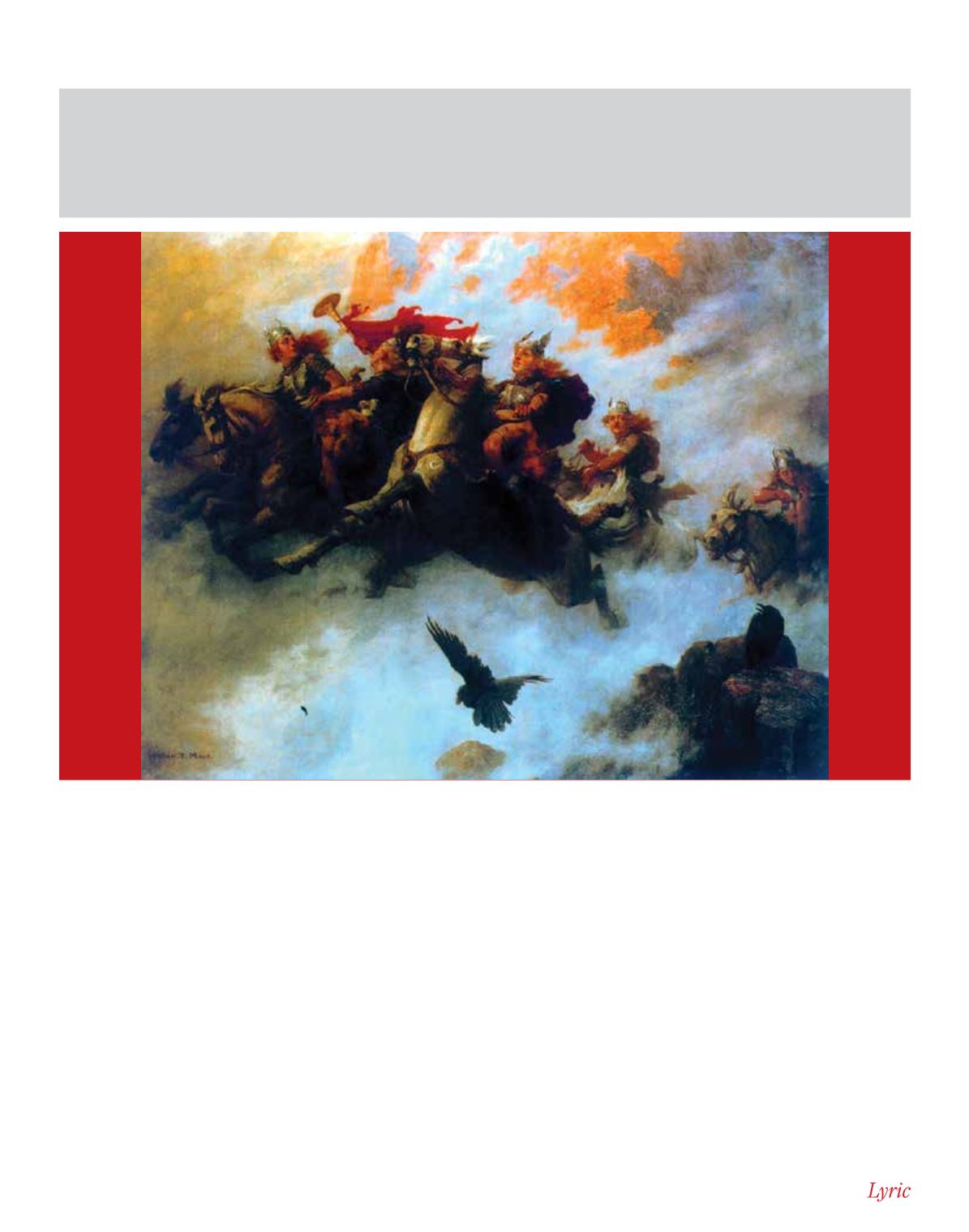

O P E R A N O T E S | L Y R I C O P E R A O F C H I C A G O
30
|
November 1 - 30, 2017
Call it the great exception.
Die Walküre
, the second opera of Richard Wagner’s mammoth
Ring of the Nibelung
cycle long has reigned as the most popular of
the tetralogy and ranks among the favorites of the composer’s
entire
oeuvre
. Wagner is challenging to many operagoers, but even
those devoted to more compact, more obviously tuneful Italian
and French standard-repertoire works often make room for
Die
Walküre.
Why? Because in
Die Walküre
, particularly its closing pages,
Wagner showcased his better self, and composed music for the ages.
The opera introduces audiences to Brünnhilde, the
Ring
’s
central character and the opera’s namesake.
Die Walküre
features a
rapturous love scene in Act One, one of most famous tunes in all
music, “The Ride of the Valkyries,” plus a finale that, when it comes
to heartrending beauty and eloquence, has few equals in opera.
And considering that between the end of
Das Rheingold
and the opening of
Walküre
the god Wotan has sired at least
eleven children (none with his wife, Fricka), there are noticeable
biographical elements to the work, particularly Wagner’s less-than-
faithful relationship with his wife.
When Wagner composed
Die Walküre
between June 1854
and March 1856, his marriage to Minna Planer was disintegrating.
Minna often criticized Wagner’s wandering eye, most notably his
relationship with Mathilde Wesendonck, the wife of a wealthy silk
merchant who was a patron of Wagner’s.
By the time
Walküre
had its world premiere in Munich on
June 26, 1870 – featuring the real-life husband and wife duo of
Henrich Vogel and Therese Vogel as Siegmund and Sieglinde –
Minna had died. Wagner was about to marry Cosima von Bülow,
with whom he already had produced three children. Cosima was
the daughter of Franz Liszt and the wife of maestro Hans von
Bülow, who had conducted the world premieres of
Tristan
und
Isolde
and
Die Meistersinger
.
But
Die Walküre
’s appeal extends well beyond memorable
Die Walküre
: A Tug at the Heart
By Richard Rothschild
“The Ride of the Valkyries,” painted by W. T. Maud (1865-1903).
















